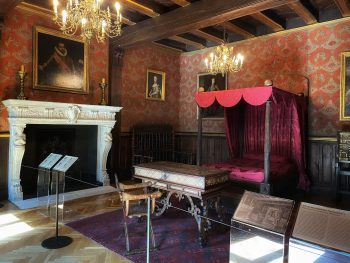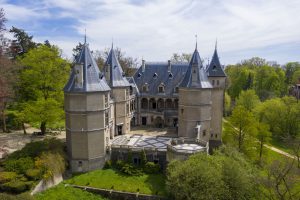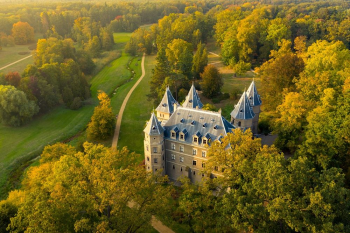Park
Gołuchów is worth visiting at any time of the year. The largest landscape park in Greater Poland is a special place, and walking through it you can see one of the best preserved residential foundations associated with the eminent Leszczyński, Działyński and Czartoryski families.
From the gallery there is a view of the surrounding castle landscape park, designed in the English style according to the concept of Jan Działyński. The designs of the count were realized by Adam Kubaszewski, the gardener associated with the estate, who was employed here in 1876. The unique beauty of the Gołuchów park is composed of appropriately selected trees, shrubs, extensive glades and landscapes close to natural landscapes. From the Leszczyński times, remnants of the hornbeam alley, visible over Trzemna from the western side of the castle, and individual specimens of limes, chestnuts and ashes remain here. The lime avenue, planted in 1857, leading north from the castle to the ponds, presents itself wonderfully. The park-arboretum area covers a nearly 3 kilometer section of the Ciemna River valley, a tributary of Prosna. The area of the park is 158.05 ha.
Currently, both the park and the buildings located on its premises are managed by the Forest Culture Center. In the former outbuilding and carriage house, forestry museums have been created.
Outbuilding
Leaving the castle, let’s turn right to reach the ivy-covered building, called the outbuilding, in a few minutes walking along a stone and then a gravel road. At the end of the 19th century, the former distillery, rebuilt for residential purposes, became Isabelle’s “second home”. Here, after 1911, the children of the last ordinaries, the Princes Czartoryski, were brought up. Interesting architecture allows the building to be called a palace, which still has wonderful interiors. You can see them by visiting the forest museum located in the building, which presents the cultural role of the forest, hunting trophies, as well as an outline of the history of forestry and contemporary forestry problems. Right next to the outbuilding, on the hill, there is a chapel.
Chapel
Walking through Gołuchowski Park, it is worth stopping for a while at the chapel. This small baroque building from the 17th century, after the death of Izabela Działyńska, was rebuilt into the family mausoleum of the Czartoryskis. In the building, which is inaccessible to visitors, the lonely creator of the Gołuchowski Museum, buried on October 10, 1899, rests. Above the entrance you can see the coat of arms of the family – the Lithuanian Chase, and on one of the stained glass windows next to the Chase, Ogończyk – coat of arms of the Działyńskis. Jan Kanty died on April 30, 1880, and as the last of the Działyńskis, he was buried in the family tomb in the undergrounds of the Kórnik church.







